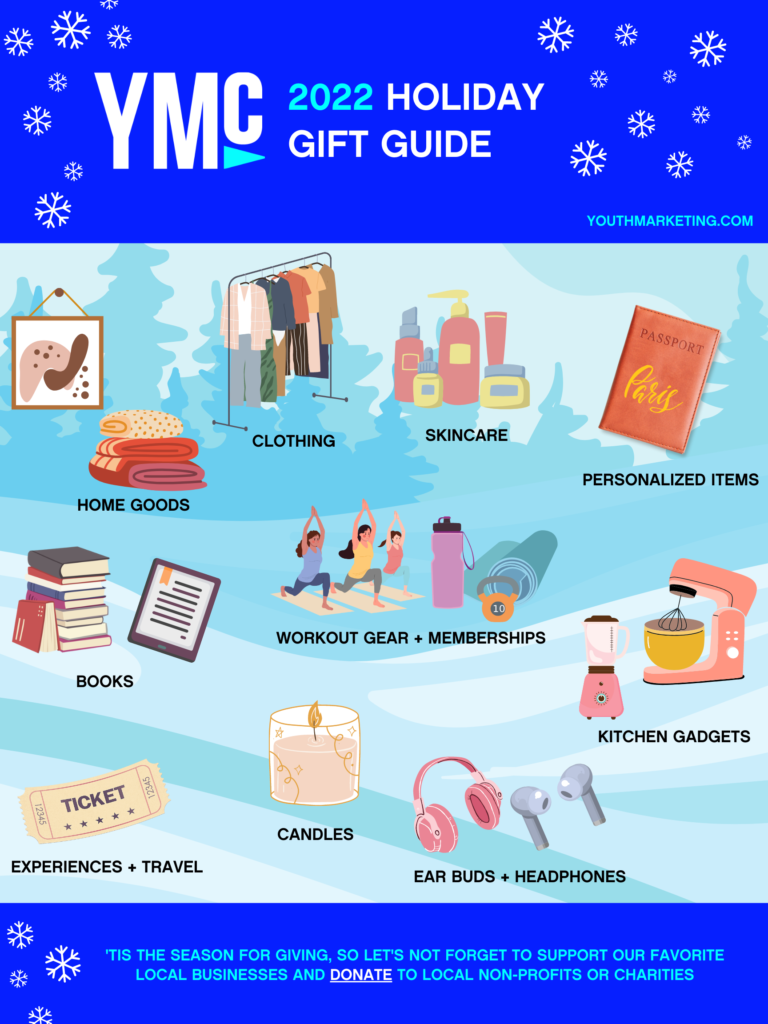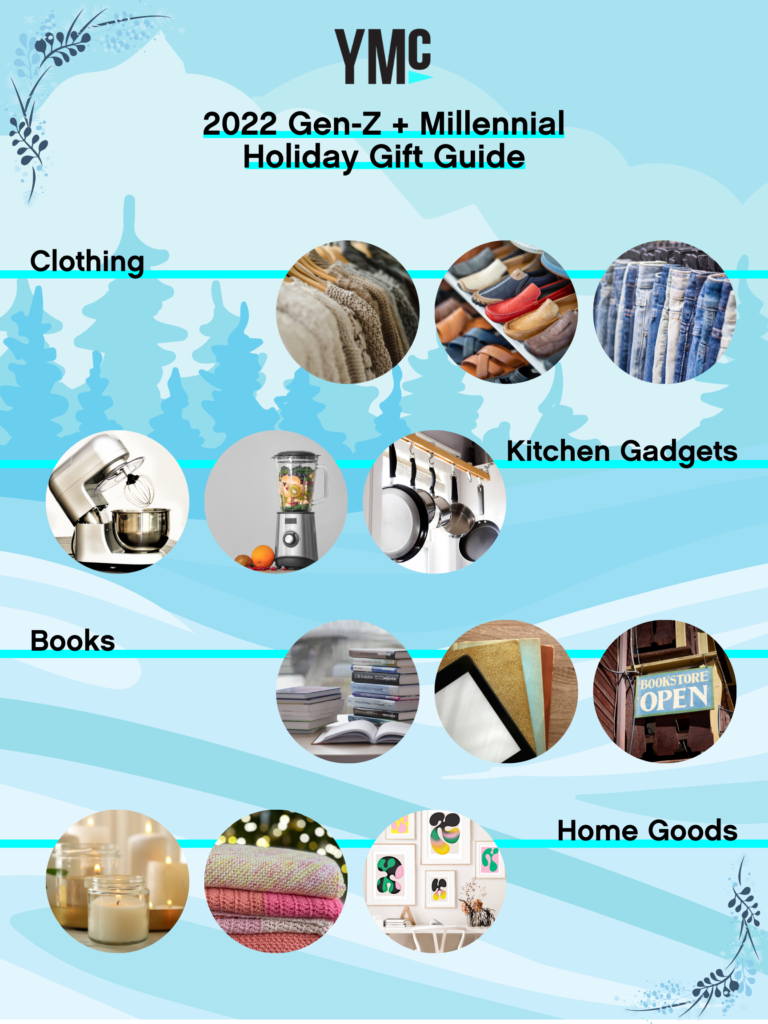
With the holidays quickly approaching, you may be scratching your head and wondering what to buy the young people in your life. Just like in years’ past, YMC has your back. We’re here to help you determine what to buy for the Gen-Zers and Millennials in your life.
About Our Gen-Z and Millennial Community
The YMC community, including our @youthmarketing followers, comprises more than two hundred thousand highly-engaged students and young adults across North America and the U.K. Over 90% of our network is between the ages of 18-34. In other words, our community represents Gen-Z and Millennials.
What We Learned
We reached out to our community via Instagram Stories and a Google Survey to find out what gifts they plan on giving and would like to receive this year. Here’s what we learned:
We’re Back! (in the office)
44.2% of respondents are back in the office full-time, and 21.2% are working hybrid schedules and spending some time in their offices. While they’ve decked out home offices for the past few years, 2023 is shaping to be the year many will ditch the comfy sweatpants and style some more professional clothes. Knowing that the young person in your life might need to refresh their wardrobe, consider giving them a subscription to a fashion box, like Stichfix or Nuuly, so they can try out new clothes and pick their favorites.
UPS, FedEx, USPS, DHL, oh my!
Holiday (and all) shopping largely took place online over the past two years, and this trend is here to stay. All of our respondents said their holiday shopping would largely take place online, either exclusively or with a little in-store shopping. None of our respondents indicated they would do most or all of their shopping in person.
Let’s Get Practical
An overwhelming majority of respondents prefer to both give and receive practical gifts. This includes both items and services that they need and will use frequently. This is a shift from the past two years, where respondents wanted fun gifts that they may not have needed but definitely wanted. This shift can be attributed to the return to more in-person activities in the past year, Gen-Z and Millennials getting more established in the workplace, and inflation pressures.
Is Cash Still King?
2021 marked a year where respondents wanted to be showered in cash and gift cards. This year, items are the preferred gift. Inflation might be the reason behind this, as people understand that budgets are being stretched and shifted. Our respondents also indicated that the thought behind a chosen gift makes an impact more so than cash or gift cards.
Seal it with a Monogram
A recurring theme we saw in our survey responses was personalization. Many of our respondents indicated getting gifts like leather passport covers or stationery with their loved one’s initials or names embossed. Even when discussing gifts that did not lend themselves to personalization, our respondents indicated that they wanted to purchase gifts that show that they’ve been paying attention to what their friends and family like.
Looking for More Than Shopping Tips?
If you’re a brand manager interested in reaching more Gen-Z and Millennial consumers, we can help! We’ve built a strong community of young people to tap for unique custom research and insights. At YMC, we’ve been connecting brands with 15- to 34-year-old consumers for two decades—and we’d be happy to share our wealth of knowledge with you. Contact us today!



